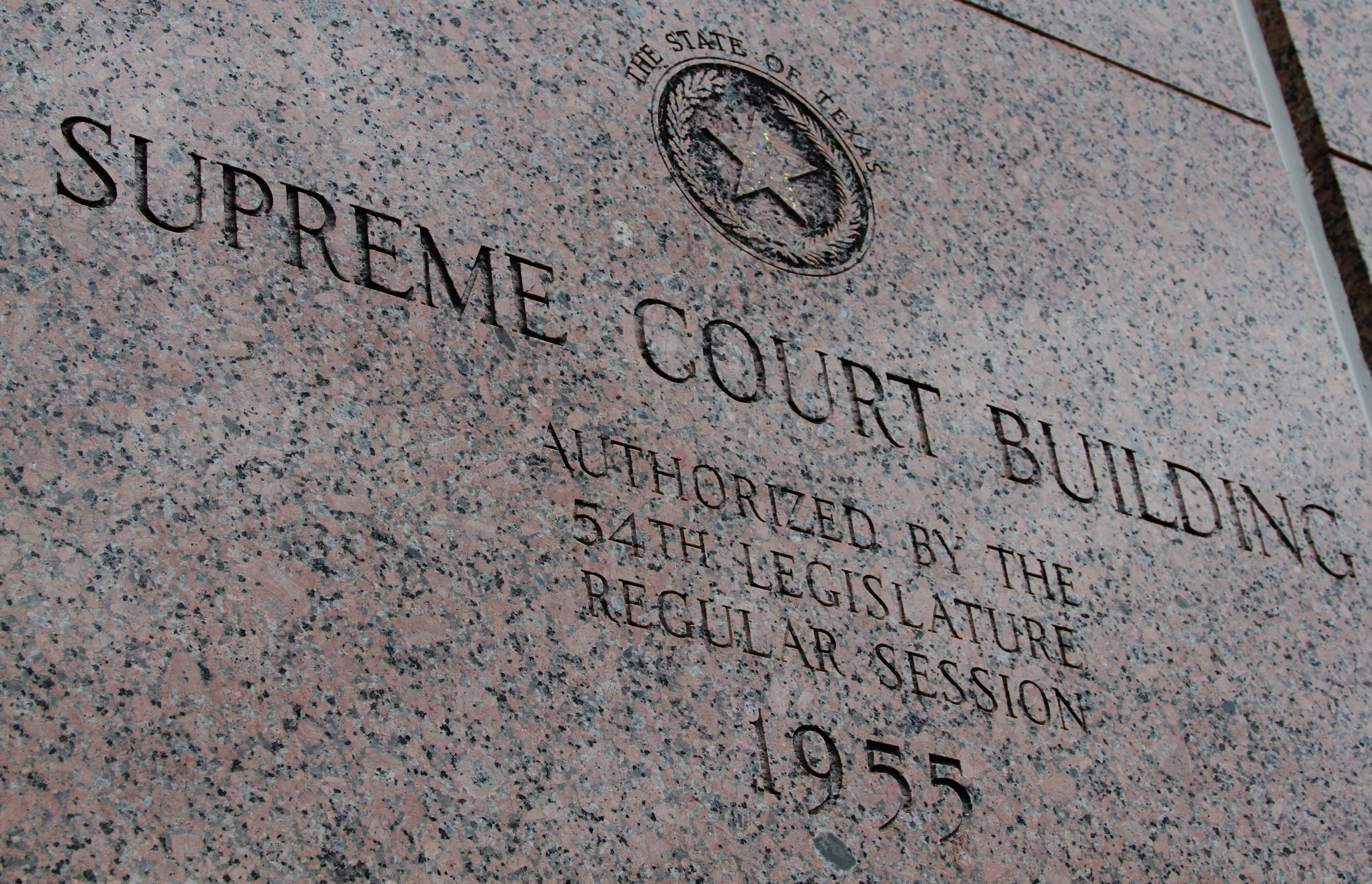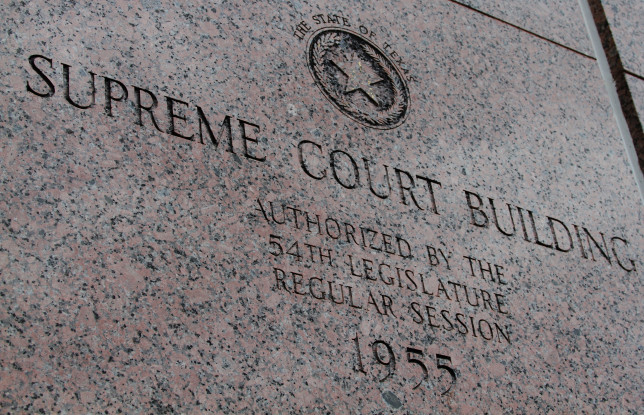Patel v. Tex. Dep’t of Licensing and Regulation
No. 12-0657
Case Summary written by Eric Matthews, Staff Member.
JUSTICE JOHNSON delivered the opinion of the Court, in which JUSTICE GREEN, JUSTICE WILLETT, and JUSTICE DEVINE joined.
Eyebrow threading is a method of shaping eyebrows using only a tightly wound strand of cotton thread. By brushing a loop of the thread over the skin, the “threader” traps and removes unwanted eyebrow hair. In 2011, the Texas legislature categorized eyebrow threading as a “cosmetology” practice, which would require threaders to hold an esthetician license. To obtain a license, a person must complete “a minimum of 750 hours of instruction in an approved training program” and pass a licensing test. The Texas Department of Licensing and Regulation (TDLR), which is governed by the Texas Commission of Licensing and Regulation (TCLR), enforces these regulations.
Minaz Chamadia, Nazira Momin, and Vijay Yogi were threaders at one of many threading mall kiosks operated by Justringz. TDLR inspected Justringz and issued Notices of Alleged Violations to Momin and Yogi for the unlicensed practice of cosmetology. Ashish Patel and Anverali Satani own a chain of threading salons named Perfect Browz. Satani also owns another threading business named Browz and Henna, which was inspected and given two warnings of violation by the TDLR. In December 2009, Chamadia, Momin, Yogi, Patel, and Satani (the Threaders) sued the TDLR, its director, and the TCLR (collectively, the State) seeking declaratory and injunctive relief under the Uniform Declaratory Judgments Act (UDJA). The Threaders sought declaratory judgment that the regulations, as applied to eyebrow threading, were unreasonable and violated their privileges and immunities and due process rights under Article 1 § 19 of the Texas Constitution. They also sought a permanent injunction barring enforcement of the regulations against them.
In their motion for summary judgment, the Threaders argued that under the constitutional challenge, the State must establish a real and substantial relationship between the regulations and the public’s health and safety, which it could not do. In its plea to the jurisdiction, the State challenged the Threaders’ standing, asserting that their claims were barred by sovereign immunity and the redundant remedies doctrine. The State also submitted a motion for summary judgment, arguing that the Threaders failed to show a deprivation of any substantive due process rights or “to plead a privileges and immunities claim different from their substantive due process claim.” The trial court granted the State’s motion for summary judgment, but dismissed its plea to the jurisdiction along with the Threaders’ motion. The court of appeals affirmed, holding that the regulations, as applied to the Threaders, did not violate Article 1 § 19.
The issues before the Supreme Court of Texas were (1) whether the real and substantial test or a rational basis test applied to a substantive due process challenge of a regulation affecting economic interests brought under Article 1 § 19; and (2) under the appropriate test, whether the cosmetology regulations, as applied to the Threaders, were unconstitutional. The State also challenged the Court’s jurisdiction, alleging that (1) the State was immune from declaratory judgment claims raising constitutional challenges to statutes; (2) the Threaders’ claims lacked justiciability and ripeness; (3) the claims were barred by the redundant remedies doctrine; and (4) Patel and Satani lacked standing. The Court addressed all of the State’s jurisdictional challenges in turn, dismissing them to reach the merits of the case.
First, the Court looked to establish the correct standard of review to apply to substantive due process challenges of economic regulations under § 19. It acknowledged the previous inconsistency of Texas courts, which the Threaders claimed applied a real and substantial test, a rational basis test involving consideration of evidence, or a rational basis test without consideration of evidence. The Court then reviewed the historical language of the Texas Constitution and its due course of law clause to determine that an accompanying consideration was required: “whether the statute’s effect as a whole is so unreasonably burdensome that it becomes oppressive in relation to the underlying governmental interest.” The Court retained the presumption that statutes are constitutional, but laid out a new standard:
“To overcome that presumption, the proponent of an as-applied challenge to an economic regulation statute under Section 19’s substantive due course of law requirement must demonstrate that either (1) the statute’s purpose could not arguably be rationally related to a legitimate governmental interest; or (2) when considered as a whole, the statute’s actual, real-world effect as applied to the challenging party could not arguably be rationally related to, or is so burdensome as to be oppressive in light of, the governmental interest.”
Then, the Court applied this test to the cosmetology regulations as applied to the Threaders. The Court noted that the Threaders challenged the excessive amount of training, not cosmetology licensing in general, as not rationally related to the interest of public health and safety. Even the State acknowledged that up to 320 of the 750 training hours were not related to hygiene and sanitation practices relevant to eyebrow threading. The Court considered the actual cost of those 320 training hours and the approximate eight-week delay in employment to find that the cosmetology regulations, as applied to the Threaders, were so oppressive that they violated the Texas Constitution. Therefore, the Court reversed the court of appeals and remanded the matter to the trial court.
JUSTICE WILLETT, joined by JUSTICE LEHRMANN and JUSTICE DEVINE, concurring.
Although a picture of the Texas Revolution’s “Come and Take It” flag would have undoubtedly been worth a thousand words, Justice Willet’s concurrence paints an equally effective picture of the historic importance of individual freedom in Texas. The concurrence agreed with the majority’s outcome, but urged for greater protection of individual economic rights. Justice Willett illustrated the often-difficult balance of individual liberty and governmental power by describing democracy as “two wolves and a lamb voting on what to have for lunch,” and liberty as “a well-armed lamb contesting the vote.” The concurrence also pointed out that unlicensed eyebrow threaders pose far less risk to public wellbeing than a government with unlimited license.
JUSTICE BOYD, concurring in the judgment.
Justice Boyd also agreed with the majority’s outcome, but not with the “unreasonably burdensome” standard. The concurrence explained that the cosmetology regulations are “arbitrary and unreasonable” and would have failed under the more traditional rational basis test, which would have been the more appropriate standard.
CHIEF JUSTICE HECHT, joined by JUSTICE GUZMAN and JUSTICE BROWN, dissenting.
Like Justice Boyd’s concurrence, Chief Justice Hecht’s dissent asserts that a more traditional rational basis test should be used. The dissent warned that the judiciary should be extremely cautious in striking economic regulations as unconstitutional and should leave such policy determinations to the legislature. Even if they are excessive, the cosmetology regulations are rationally related to the legitimate interest of public health and safety; therefore, the regulations should be upheld as constitutional.
JUSTICE GUZMAN, dissenting.
Justice Guzman expressed serious doubt that the majority’s standard is feasible in practice. The dissent agreed that the regulations may be excessive, but that excessiveness is an issue better left to the legislature.


